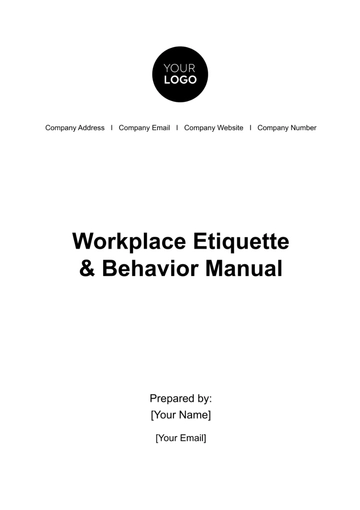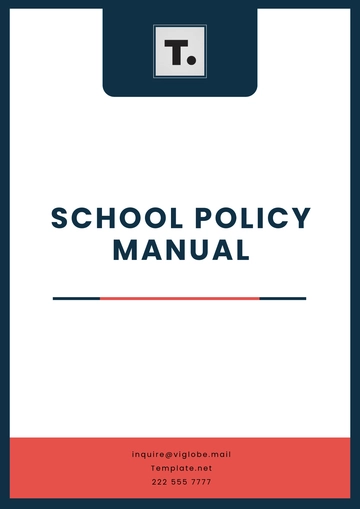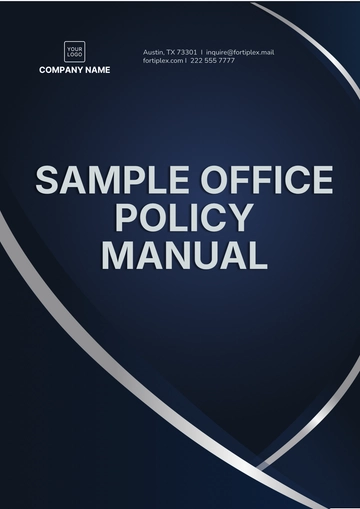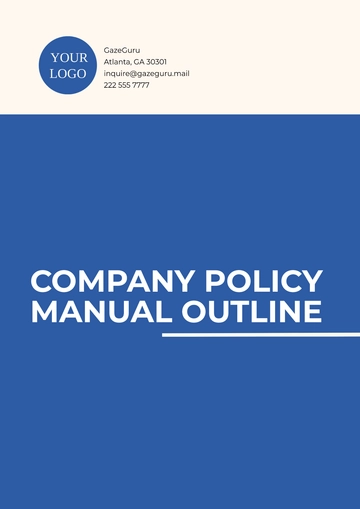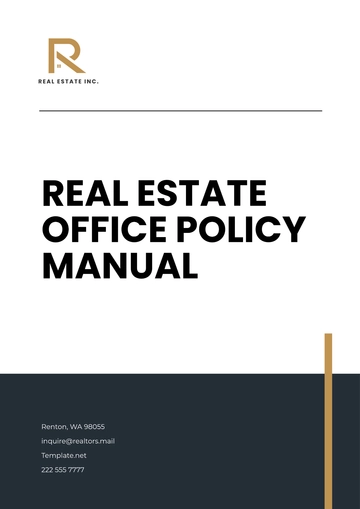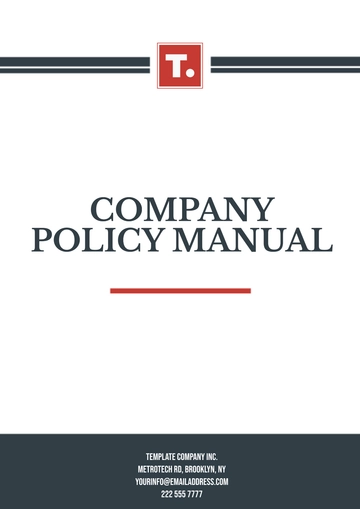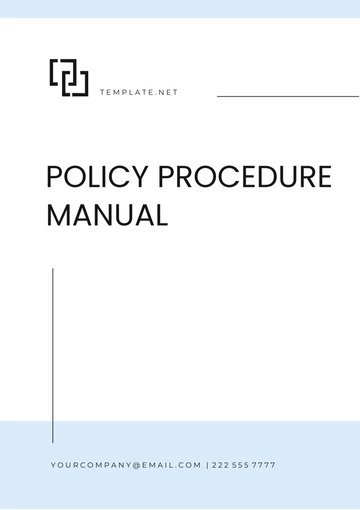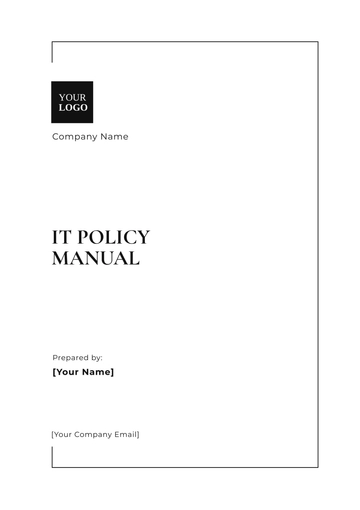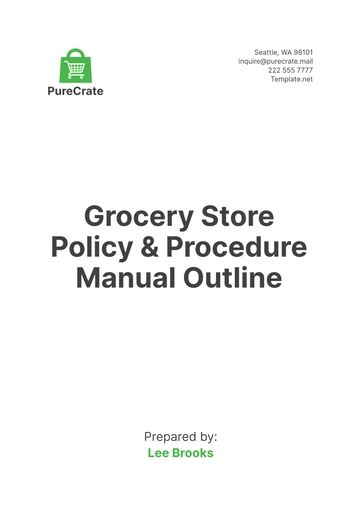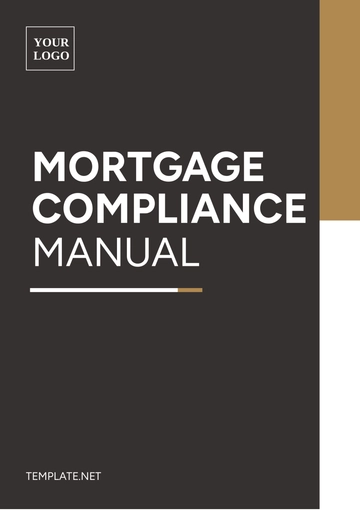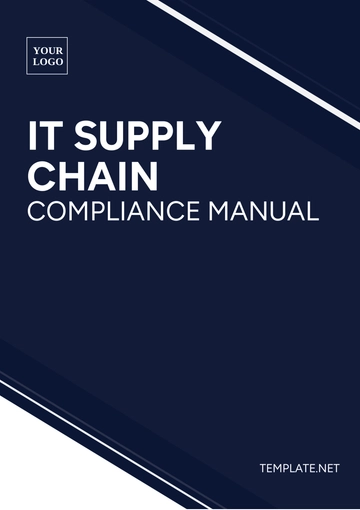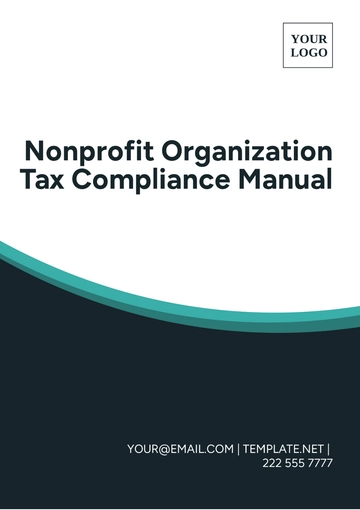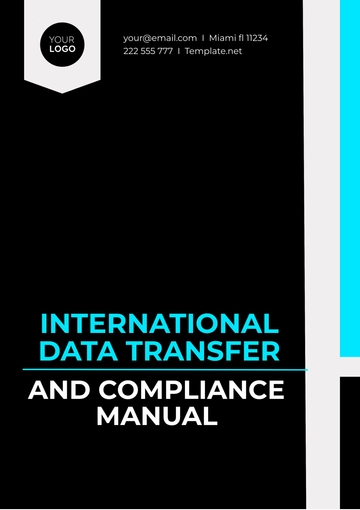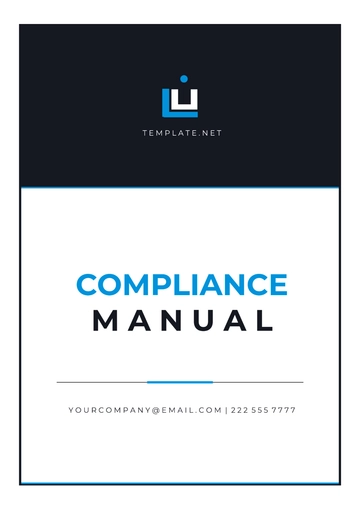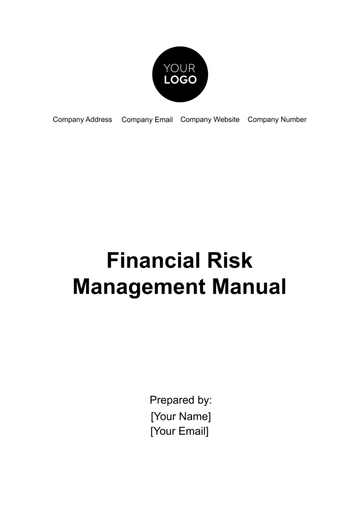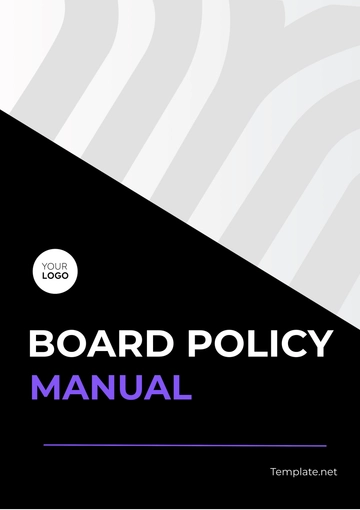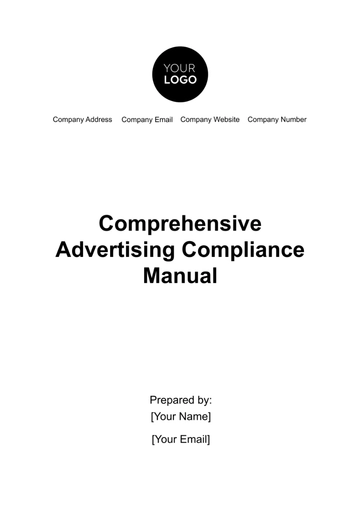Free Corporate Communication Advertising Policy Manual
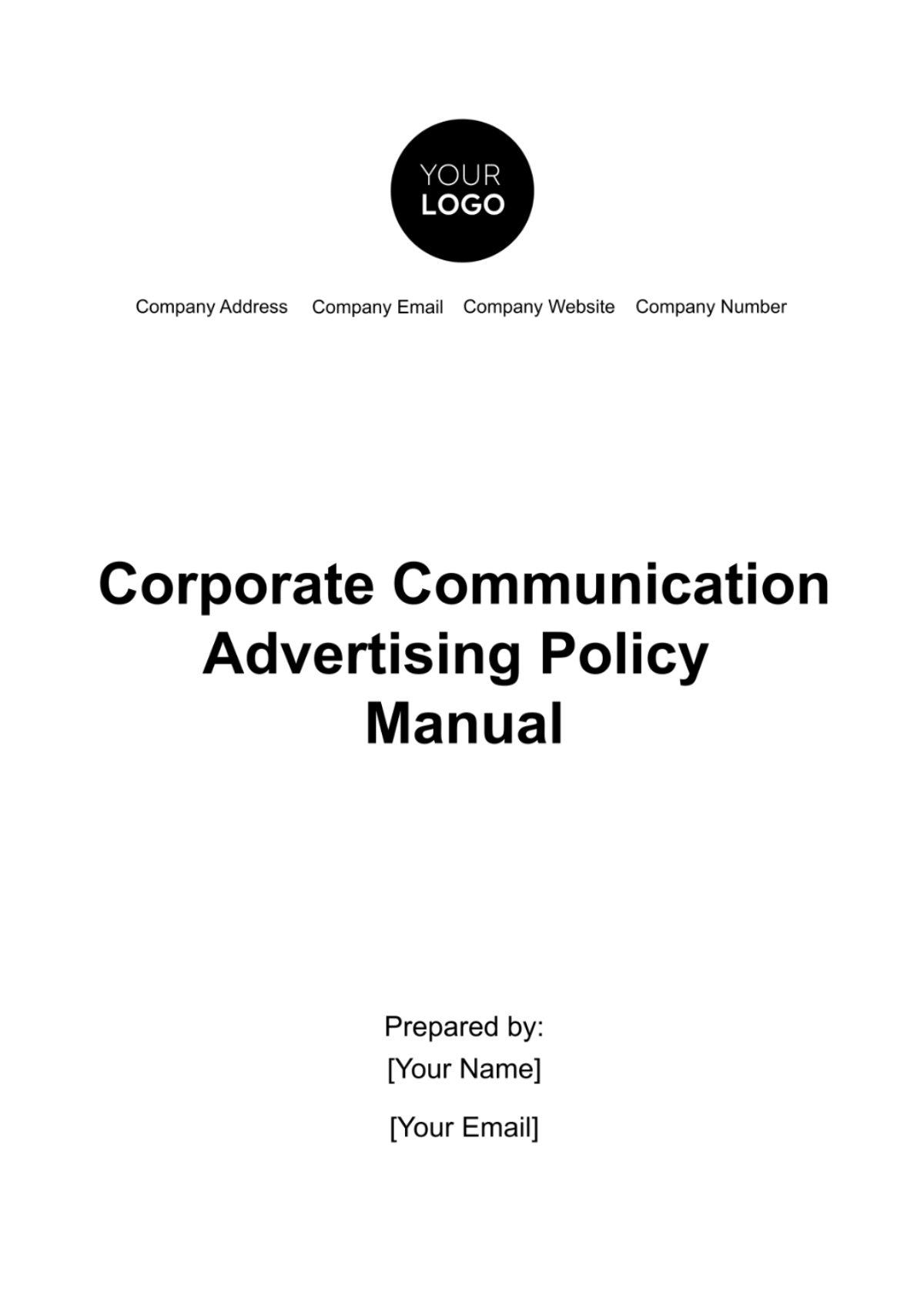
1. Introduction
1.1. Purpose of the Manual
This manual serves as a comprehensive guide for [Your Company Name]'s corporate communication and advertising policies. It outlines the principles, processes, and guidelines that govern our communication efforts to ensure consistency, legality, and ethical standards.
1.2. Scope of the Policy
This policy applies to all communication and advertising activities undertaken by [Your Company Name], including but not limited to print, digital, social media, and sponsorships.
1.3. Key Objectives
Ensure all communication aligns with the company's values and objectives.
Comply with legal and regulatory requirements in all advertising efforts.
Maintain a consistent brand image across all communication channels.
2. General Principles
2.1. Ethical Considerations
In fostering [Your Company Name]'s commitment to integrity, our communication and advertising activities are bound by the highest ethical standards. Deceptive practices, false claims, or any form of misleading information are strictly prohibited. Upholding honesty and transparency in our communication endeavors is not just a commitment but a fundamental element of our corporate character. All team members engaging in advertising are expected to champion these principles in every campaign and communication initiative.
2.2. Legal Compliance
Recognizing the intricacies and ever-evolving nature of legal standards, the legal department assumes a pivotal role. Their responsibility is to meticulously review all advertising materials to ensure strict compliance. By staying abreast of legal nuances, we safeguard the company's reputation and financial interests, reinforcing our commitment to responsible corporate citizenship.
2.3. Brand Alignment
Every piece of communication, be it an advertisement or a public statement, must harmonize seamlessly with our brand identity, values, and overarching messaging strategy. This alignment is not just about visual consistency but extends to the core of our values, ensuring that our brand is perceived authentically and consistently across diverse platforms and audiences.
2.4. Transparency and Accuracy
Every claim made in our advertising materials must be substantiated with factual and verifiable information. To further fortify this commitment, disclaimers are to be included whenever necessary, ensuring that our audience is well-informed and trusts the information presented. Transparency and accuracy are not just obligations but integral components of our commitment to building lasting and meaningful relationships with our stakeholders.
3. Roles and Responsibilities
3.1. Corporate Communication Department
Responsible for developing and executing communication strategies, ensuring consistency across all channels.
3.2. Marketing Department
Collaborates with the Corporate Communication Department to develop advertising campaigns that align with marketing objectives.
3.3. Legal Department
Ensures that all advertising materials comply with relevant laws and regulations, minimizing legal risks.
3.4. Senior Management
Ultimate approval authority for all advertising campaigns, ensuring alignment with the company's strategic goals.
4. Advertising Strategy
4.1. Target Audience
The success of our messaging relies on a profound understanding of the demographics, preferences, and behaviors of our audience. Conduct thorough market research to identify and segment our audience, allowing us to tailor messages with precision. By pinpointing the specific needs and desires of our target demographic, we can create compelling content that resonates and establishes a meaningful connection.
4.2. Message Consistency
Regularly review and update brand guidelines to maintain a cohesive tone, voice, and imagery. This consistency reinforces brand recall, builds trust, and solidifies our brand's position in the minds of our audience.
4.3. Media Channels
Assess the media habits of our audience to determine where they are most receptive to our messages. Consider a multichannel approach that integrates traditional and digital platforms to maximize reach. Evaluate the effectiveness of each channel based on metrics such as engagement, conversion rates, and cost-effectiveness. This dynamic approach ensures that our advertising efforts align with the evolving landscape of consumer media consumption.
4.4. Budget Allocation
Conduct a thorough cost-benefit analysis to identify high-performing channels and allocate resources accordingly. Consider the unique requirements of each campaign, adjusting budgets to align with specific objectives. Regularly review and reassess budget allocations based on campaign performance metrics. A flexible and data-driven approach to budgeting ensures that resources are deployed efficiently, maximizing the return on investment and enhancing the overall effectiveness of our advertising strategy.
5. Content Approval Process
5.1. Initial Concept Submission
All advertising concepts must be submitted for review and approval before production.
5.2. Review and Approval Workflow
Establish a clear workflow for content review, involving relevant departments and stakeholders.
5.3. Legal Compliance Check
The legal department must conduct a thorough review to ensure compliance with laws and regulations.
5.4. Senior Management Approval
Final approval rests with senior management to ensure alignment with organizational goals.
6. Brand Guidelines
6.1. Logo Usage
The company logo is a visual representation of [Your Company Name]'s identity and values. To ensure a strong and consistent brand image across all advertising materials, it is imperative to adhere to the following guidelines:
Size and Proportion: Maintain the original proportions of the logo to prevent distortion and ensure clarity. Avoid resizing that compromises the integrity of the logo.
Clear Space: Allow for ample clear space around the logo to enhance visibility and prevent visual clutter. This ensures that the logo remains the focal point and retains its impact.
Color Variations: When applicable, utilize both color and grayscale versions of the logo. The choice between these versions should be guided by the background and context of the advertising material.
Background Contrast: Select a background that provides sufficient contrast to the logo, enhancing its visibility and legibility. Avoid placing the logo on visually busy backgrounds that may detract from its impact.
Placement: Consistently position the logo in a prominent and easily noticeable location within the advertising material. Maintain alignment with other key visual elements to create a cohesive and professional appearance.
6.2. Color Palette
The color palette is a critical aspect of [Your Company Name]'s visual identity, contributing to brand recognition and establishing an emotional connection with the audience. To maintain visual consistency across all campaigns, the following guidelines should be observed:
Primary Colors: Clearly define the primary color palette that represents the core identity of the brand. Specify Pantone, RGB, CMYK, and hexadecimal values for each primary color.
Secondary Colors: If applicable, outline a set of secondary colors that complement the primary palette. Provide guidelines on their usage in specific contexts to maintain a harmonious visual appeal.
Color Combinations: Establish approved color combinations to guide the creation of visually appealing designs. Specify which colors are suitable for backgrounds, text, and other design elements.
6.3. Typography
Consistent and standardized font usage is integral to reinforcing brand recognition and maintaining a professional appearance in all communications. The following guidelines should be followed:
Font Selection: Identify and specify the primary and secondary fonts for use in advertising materials. Ensure that these fonts align with the brand's personality and are easily legible across various media.
Font Variations: If applicable, define variations such as font weights and styles for different purposes, such as headlines, body text, and captions. This enhances flexibility while maintaining brand consistency.
Size and Spacing: Provide guidelines on font sizes and spacing to maintain readability and visual balance. Specify minimum and maximum font sizes for different applications.
Hierarchy: Establish a typographic hierarchy to guide the arrangement of text elements. This ensures that important information is emphasized appropriately, contributing to effective communication.
6.4. Imagery and Photography
Imagery plays a crucial role in conveying [Your Company Name]'s brand values and creating a visual narrative that resonates with the target audience. To ensure alignment with the brand, adhere to the following guidelines:
Relevance: Select imagery that directly aligns with the brand's values, messaging, and target audience. Ensure that visuals contribute to a coherent and authentic brand narrative.
Consistency in Style: Define a consistent style for imagery, whether it be photography or illustrations. This includes aspects such as tone, mood, and visual elements to create a unified visual language.
Brand Representation: Images should authentically represent the diversity and inclusivity valued by the brand. Avoid stereotypes and portray a genuine reflection of the audience and community.
7. Social Media Guidelines
7.1. Social Media Platforms
Identify and prioritize social media platforms based on the target audience and campaign objectives.
7.2. Tone and Voice
Establish a consistent tone and voice for social media communication that aligns with the brand.
7.3. Frequency and Timing
Determine posting frequency and optimal timing for social media content to maximize engagement.
7.4. Crisis Communication Plan
Develop a plan to address and manage communication during crises to protect the brand reputation.
8. Corporate Sponsorships and Partnerships
8.1. Selection Criteria
Selecting sponsorships and partnerships that align with [Your Company Name]'s values and objectives is crucial for building authentic and meaningful connections. The following criteria should guide the decision-making process:
Alignment with Values: Assess the prospective sponsor or partner's values to ensure they resonate with [Your Company Name]'s core principles. This alignment is fundamental for a mutually beneficial and credible association.
Target Audience Alignment: Evaluate whether the sponsorship or partnership provides access to the desired target audience. This ensures that the collaboration contributes to strategic marketing and outreach efforts.
8.2. Contractual Agreements
Clear and comprehensive contractual agreements are essential to establishing a solid foundation for successful sponsorships and partnerships. To ensure a mutually beneficial relationship, contracts should:
Expectations and Deliverables: Clearly outline the expectations and deliverables for both parties involved. This includes specifying the scope of work, responsibilities, and the desired outcomes of the collaboration.
Benefits and Considerations: Clearly define the benefits each party will receive from the partnership. This may include marketing exposure, access to resources, or mutual promotional activities. Address any financial considerations and the mechanism for benefit distribution.
8.3. Co-Branding Guidelines
Maintaining consistency in co-branded materials is essential for reinforcing brand associations and ensuring a unified brand message. Guidelines for co-branding should:
Logo Placement and Size: Clearly specify where and how both brands' logos should be placed within co-branded materials. Ensure that the size and prominence of each logo maintain a visual balance.
Color Harmony: Define a harmonious color palette that integrates both brands seamlessly. This ensures that co-branded materials visually represent the collaboration while maintaining the individual identity of each brand.
8.4. Monitoring and Evaluation
Regularly monitoring and evaluating the effectiveness of sponsorships and partnerships is crucial for optimizing outcomes and maintaining alignment with [Your Company Name]'s strategic goals. This process should include:
Key Performance Indicators (KPIs): Define specific KPIs that align with the objectives of each sponsorship or partnership. This may include metrics such as brand visibility, audience engagement, or lead generation.
Regular Review Schedule: Establish a consistent schedule for reviewing the performance of sponsorships and partnerships. This ensures timely adjustments and the ability to capitalize on successful initiatives.
9. Measurement and Reporting
9.1. Key Performance Indicators
Establishing robust Key Performance Indicators (KPIs) is fundamental to gauging the effectiveness and impact of advertising campaigns. These indicators provide a quantitative and qualitative framework for measuring success and guiding strategic decisions. When defining KPIs, consider the following aspects:
Objective Alignment: Ensure that each KPI is directly aligned with the overarching objectives of the advertising campaign. Whether the goal is brand awareness, lead generation, or conversion, KPIs should be tailored to reflect the desired outcomes.
Quantifiable Metrics: Choose metrics that are quantifiable and measurable to facilitate accurate analysis. This may include metrics such as click-through rates, conversion rates, engagement metrics, and reach.
Audience Engagement: Incorporate metrics that reflect audience engagement and interaction with the advertising content. Metrics such as likes, shares, comments, and time spent on content provide insights into the campaign's resonance with the target audience.
9.2. Reporting Frequency
Determine the frequency of reporting to assess campaign performance and make data-driven decisions.
9.3. Continuous Improvement
Implement a feedback loop for continuous improvement based on campaign performance data.
10. Policy Review and Updates
10.1. Periodic Review
Conduct regular reviews of the advertising policy to ensure relevance and effectiveness.
10.2. Stakeholder Feedback
Solicit feedback from relevant stakeholders to gather insights for policy improvements.
10.3. Version Control
Maintain version control to track updates and ensure all stakeholders are working with the latest version of the policy.
- 100% Customizable, free editor
- Access 1 Million+ Templates, photo’s & graphics
- Download or share as a template
- Click and replace photos, graphics, text, backgrounds
- Resize, crop, AI write & more
- Access advanced editor
Unlock effective corporate communication strategies with Template.net's Corporate Communication Advertising Policy Manual Template. This editable and customizable resource, powered by our Ai Editor Tool, empowers you to define and enforce advertising policies. Ensure consistency, compliance, and brand integrity across all communication channels with this comprehensive template.


